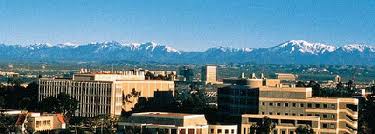Mojtaba Sadegh | Elias Massoud | Ashehad Ali | Cyrus Wan | Hui Qin | | Hao Guo | Veysel Yildiz | Mohammad Moghaddam | Ronald Domholdt | Matin Naeini | Eric Laloy | Paolo Nasta | Daniel Partridge | Jörg Rings | Benedikt Scharnagl | Gerrit Schoups | Jurriaan Spaaks | Tobias Lochbuehler |
Founded in 1965, the University of California, Irvine combines the strengths of a major research university with the bounty of an incomparable Southern California location.
With a commitment to cutting-edge research, teaching, learning and creativity, UCI is a driving force of innovation and discovery that benefits our local, national and global communities in multiple different ways.
Visit Quick Facts to learn more about UCI.
 Mojtaba Sadegh
Mojtaba Sadegh
PhD student, Department of Civil and Environmental Engineering
Email: msadegh @ uci . edu
Mojtaba Sadegh is a PhD student in the Department of Civil and Environmental Engineering at University of California Irvine. Mojtaba received his BS degree in Civil Engineering from Ferdowsi University of Mashhad, Iran, 2007. He earned his MS degree in Civil-Water Engineering from University of Tehran, Iran, 2010. Mojtaba did his MS thesis under supervision of Prof. Kerachian working on Game Theory and its application to equitable water allocation. He has published two papers in peer-reviewed journals on this topic and presented several papers in national and international conferences.
While being at UCI, he has done extensive research on different aspects of hydrologic inference problems including data processing and analysis; and inverse modeling approaches. Results of his research on information extraction from hydrologic data sets with a focus on different data transformation methods was presented at the AGU Fall meeting in 2011 (Sadegh and Vrugt, 2011) . Recently, his work has turned to diagnostic model evaluation using a new inference approach called Approximate Bayesian Computation (ABC). ABC approaches avoid explicit evaluation of the likelihood function by comparing summary metrics of the observations and model simulations. This framework is admirably suited for diagnostic model evaluation (Vrugt and Sadegh, 2013) , and establishes a common theoretical ground between formal and informal inference methods (Sadegh and Vrugt, 2013) . Unfortunately, the ABC sampling problem is difficult to solve, particularly for high-dimensional system models. Mojtaba has therefore developed DREAM(ABC) which is about 10-20 times more efficient than common ABC rejection and population Monte Carlo simulation methods (Sadegh and Vrugt, 2014a). Recent work demonstrates that diagnostic model evaluation can be used to detect hydrologic non-stationarity (Sadegh and Vrugt, 2014b), and epistemic errors (Vrugt et al., 2014).
https://faculty.sites.uci.edu/jasper/files/2014/07/WRR_Mojtaba_DREAM_ABC_Final_Published.pdf
Mojtaba his research experiences also includes working with waste load allocation models, cooperative water allocation models, environmental impact assessment of water transfer projects, and application of Neural Networks, Fuzzy Sets and GA in water resources management and water and waste water treatment.
 Elias Massoud
Elias Massoud
PhD student, Department of Civil and Environmental Engineering
Email: emassoud @ uci . edu
Elias Massoud is a PhD student in the Department of Civil and Environmental Engineering at University of California Irvine. Elias received his BS degree in Civil and Environmental Engineering from UCLA in 2011, and went on to obtain his MS degree in Civil Engineering (Hydrology & Water Resources) at UCLA in 2012 under the advising of Professor Steve Margulis.
Elias has experience with topics such as surface water hydrology and data assimilation, groundwater hydrology and aquifer modeling, hydrometeorology, remote sensing, climate change & modeling, biophysical modeling, and the analysis of water resources systems.
His current research efforts are devoted towards improved prediction of terrestrial nitrogen and carbon fluxes. Nitrogen is a dominant regulator of vegetation dynamics and the terrestrial carbon cycle, yet rather simplistic empirical-type models are still used to predict the effect of nitrogen limitation and light competition on vegetation growth. Therefore, a large uncertainty exists in the current simulation of nitrogen related processes (e.g., photosynthesis and soil carbon storage response to nitrogen addition), which substantially affects the reliability of predicted terrestrial carbon fluxes. To assess energy impacts on the global carbon cycle and future climates, Elias works closely with collaborators from Los Alamos National Laboratory (Chonggang Xu) to develop, test, and calibrate a next generation carbon-nitrogen dynamics model and integrate this model into the Community Earth System Model (CESM) developed mainly by the National Center of Atmospheric Research (NCAR), LANL and many other universities. This dynamic carbon-nitrogen model will incorporate recent advances in nitrogen modeling and use recent advances in Markov Chain Monte Carlo simulation to rigorously calibrate and evaluate the developed model against observations, including soil fertilization and free air CO2 enrichment (FACE) observations across a range of different forest types. The calibrated model will be used to assess the effects of different energy use scenarios on global climates.
 Ashehad Ali
Ashehad Ali
Postdoctoral Researcher, Department of Civil and Environmental Engineering & Los Alamos National Laboratory
Email: ashehad @ gmail . com
Dr. Ashehad Ali completed a joint PhD degree in Bio-mathematical modeling from Macquarie University, Sydney and the University of Minnesota, St. Paul in mid-2012. In his dissertation, he modeled the effects of rising carbon dioxide and nitrogen deposition on the outcome of competing grassland species. He also explored differences among species in response to changes in carbon dioxide and nitrogen deposition at different time-scales (short, medium and long-term).
His current postdoctoral research focuses on developing a next generation carbon and nitrogen model. Currently, Dr. Ali is working on an ecosystem model and improving its nitrogen cycling component. For this he is using model-data synthesis methods such as Bayesian inference combined with distributed computing to speed up computational efficiency. The ultimate goal of his project is to couple the developed model to an earth system model and confront the model simulations with field and other observations. Initial results of his work are presented in a poster which will be presented at the UC-Lab Research workshop in San Francisco, July 2013 (Ali et al, 2013) .
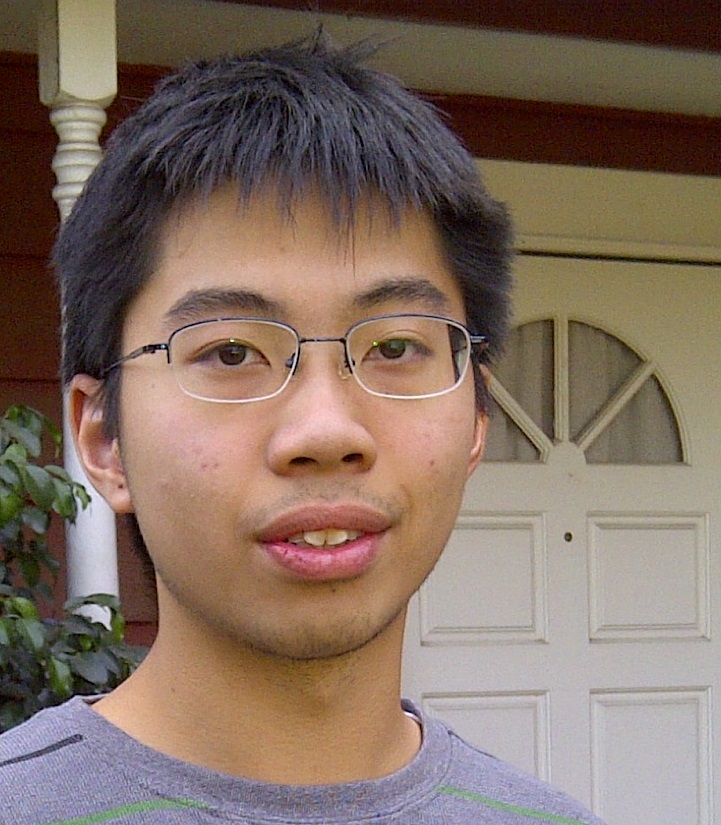 Cyrus Wan
Cyrus Wan
Undergraduate student, Department of Civil and Environmental Engineering
Email: cyrusw1 @ uci . edu
Cyrus is an undergraduate student majoring in Civil Engineering at the University of California, Irvine. His involvement with our research group began after taking the introductory course to problem solving in Engineering using MATLAB (CEE-20). Cyrus is involved in several of our ongoing projects, and helping out with computer coding (translating codes from one language to another), and building of graphical user Interfaces (GUIs) for some of our software products. His main research interests are in applying computer modeling and data analysis to earth science and engineering systems.
 Hui Qin
Hui Qin
Graduate student, Department of Geotechnical Engineering, Tongji University, China
Email: 12_qinhui @ tongji.edu.cn
Hui Qin is a graduate student in the Department of Geotechnical Engineering at Tongji University, China. He received both his BS and MS degrees in Civil Engineering from Tongji University. He is now working in our research group towards his PhD degree “Modeling of cross-hole ground penetrating radar detection and inversion algorithms”. His research interest are in applied geophysics with specific emphasis on detection of cracks in concrete structures using travel time measurements from ground penetrating radar. This includes antenna design, system calibration, equipment development, site testing, numerical simulation and imaging algorithms. His research visit is sponsored by the China scholarship council.
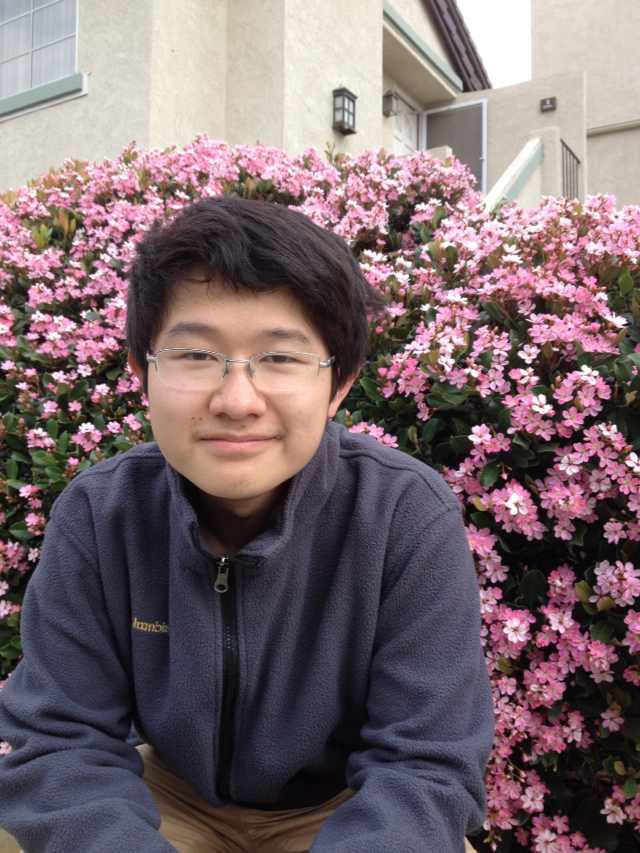 Hao Guo
Hao Guo
Undergraduate student, Department of Civil and Environmental Engineering
Email: haog2 @ uci . edu
Hao is a MS student in the Department of Civil and Environmental Engineering at the University of California, Irvine. He has received his BS degree in Environmental Engineering from the University of Science and Technology Beijing in 2013, and then started his MS studies in Environmental Engineering at UCI in 2013. As part of his MS thesis, Hao is currently working on rainfall estimation and error characterization using a suite of different hydrologic models. He is planning to pursue at PhD degree in the future.
 Veysel Yildiz
Veysel Yildiz
Graduate student, Department of Civil and Environmental Engineering
Email: vyildiz @ uci . edu
Veysel is a MS student in the Department of Civil and Environmental Engineering at the University of California Irvine. He joined our research group in the Fall of 2013 and his main interests involve the hydraulic and hydrologic design of hydropower plants. His MS thesis project involves the application of numerical modeling, control theory, and optimization methods to maximize the power production of hydropower plants. He has developed a novel single (Bayesian) and multiple (Pareto) objective maximization approach to help optimize the design and operation of power plants. The results of his research significantly enhance our ability to maximize the production of energy from power plants, and find the most economical design and real-time operation of the plant including (among others) turbine type and installation capacity, the number of turbines, inflow rates, and the diameter of the penstock. Publications on these topics are forthcoming.
Veysel has received his BS degree in civil engineering from the Istanbul Technical University in Turkey.
 Mohammad Moghaddam
Mohammad Moghaddam
Graduate student, Department of Civil and Environmental Engineering
Email: abdolhom @ uci . edu
Mohammad is a MS student in the department of Civil and Environmental Engineering at the University of California Irvine. He joined our research group in the summer of 2014. His interests and experiences includes hydrogeology, hydrology, optimization and inverse modeling methods including global and local optimization techniques, data assimilation schemes for calibration/uncertainty quantification as well as statistical Bayesian analysis using Monte Carlo simulation. His MS thesis project includes the application of diagnostic model evaluation to improve the regionalization of hydrologic model parameters. The results of this research significantly enhance our ability to predict the streamflow response of ungauged watersheds. Publications on this topic are forthcoming.
Mohammad received his BS degree in structural engineering from the AmirKabir University in Iran. He has published four research papers in national and international proceedings.
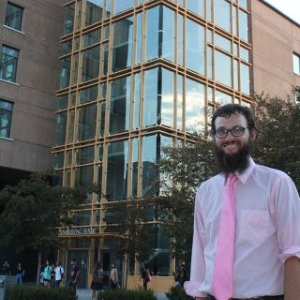 Ronald Domholdt
Ronald Domholdt
Undergraduate student, Department of Civil and Environmental Engineering
Email: rdomhold @ uci . edu
Ronald is an undergraduate student double majoring in Environmental and Civil Engineering at the University of California, Irvine. He began research with our team after taking the introductory course of MATLAB (CEE-21). Ronald is involved in a regionalization project helping us extract data to work out the parameters of a watershed that can be applied everywhere. His main research interests are in data analysis and modeling of watersheds, carbon emissions, and rock formations/geology. He is planning to pursue his PhD immediately after undergrad.
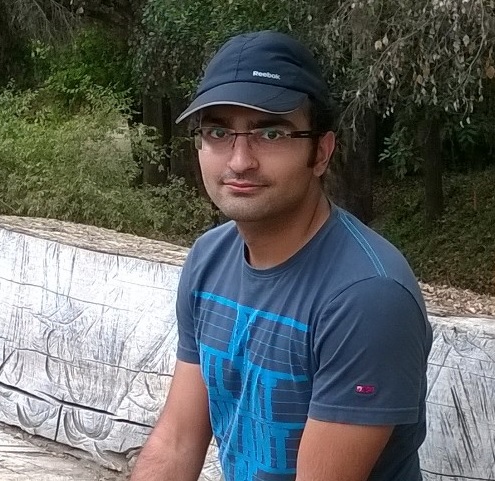 Matin Naeini
Matin Naeini
Graduate student, Department of Civil and Environmental Engineering
Email: rahnamam @ uci . edu
Matin is a MS Student in the department of Civil and Environmental Engineering at University of California Irvine. He received his BS degree in Civil Engineering from Iran University of Science and Technology in 2014. He is currently working on application of Miller-Miller similitude scaling in surface hydrology. This enables a rapid characterization of the spatial variability of catchments – and allows for regionalization of scaling factors using easily measurable basin properties. Publications on this topic are forthcoming. He is planning to pursue his PhD in the near future.
 Eric Laloy
Eric Laloy
Postdoctoral Researcher, Department of Civil and Environmental Engineering
Email: elaloy @ uci . edu
Eric Laloy graduated as a Bioengineer in 2004 at the Universite catholique de Louvain (Belgium). In May 2010, he received a Ph.D. in hydrology with Cum Laude from the same University. He joined the research group of Jasper Vrugt at the University of California Irvine in September 2010, to work as a postdoctoral researcher.
He has experience in hydrological and hydrodynamic modeling, erosion modeling, hydrogeophysics, geostatistics, single and multi-criteria optimization, uncertainty assessment, Bayesian statistics and Monte Carlo Markov chain (MCMC) techniques. His work has been published in international peer-reviewed journals such as European Journal of Soil Science, Journal of Hydrology, and Vadose Zone Journal.
During his postdoctoral appointment at UC Irvine, Eric has written five peer reviewed publications on topics ranging from efficient adaptive distributed MCMC simulation (Laloy and Vrugt, 2012) , to distributed soil moisture estimation from geophysical data (Laloy et al, 2012), Pareto estimation using DREAM (In Review), generalized polynomial chaos and two-stage MCMC simulation for efficient uncertainty characterization of CPU-intensive hydrogeologic models (Laloy et al, 2013), and Bayesian model selection using Gaussian mixture modeling of posterior samples (In Review).
 Paolo Nasta
Paolo Nasta
Postdoctoral Student, Soil Physics
Email: paolo.nasta @ unina . it
Paolo received his PhD from the University of Naples Federico II and is currently employed at the University of Lincoln-Nebraska working on the modeling water dynamics for experimental sites located in corn fields in Eastern Nebraska (USA). His main interests are in soil physics and water resources management, hydraulic engineering, soil hydrology, laboratory and field determination of the soil hydraulic properties, parameter optimization, spatial variability of soil properties, development of simulation models for unsaturated flow, scale problems in hydrology, large-scale inverse modeling through remote sensing techniques, catchment hydrology, and root water and nutrient uptake mechanisms. He spent two months in our research group to work on scaling of soil hydraulic properties from the pore size distribution (Nasta et al. 2013) and development of closed-form analytic equations to estimate the saturated hydraulic conductivity from water retention parameters (Nasta et al. 2013) .
Co-advised students / Visitors
 Daniel Partridge
Daniel Partridge
Department of Physics, Oxford University, United Kingdom
Email: Daniel . Partridge @ physics . ox . ac . uk
Dr. Daniel Partridge has spent 3 months in our group to support his PhD studies “Inverse Modeling of Cloud-Aerosol Interactions” at the Department of Applied Environmental Science, Stockholm University, Sweden. This collaboration was initiated after Daniel attended a talk we gave at the EGU in 2008, and this has resulted in three publications to date, two of which have been published in Atmospheric Chemistry and Physics and can be downloaded from here and here.
He received his BSc in Environmental Science of the Earth and atmosphere, University of Reading in 2005 and also at the same university his MSc in Weather, Climate and Modelling in 2006 for which he was awarded funding from NERC.
His current research involves using a Chemical and Aerosol Lagrangian Model (CALM) to better understand and describe the evolution of aerosol size distributions. The other main focus of his research is to develop new analysis techniques in order to better understand cloud development. Specifically he is using Monte Carlo based approaches to better untangle the relative importance of aerosol physiochemical properties on the activation of cloud droplets, and quantify uncertainties of aerosol-cloud dynamics with a specif emphasis on diagnosis of model errors.
 Jörg Rings
Jörg Rings
Dr. Joerg Rings received his PhD from Germany in 2008, and has spent two months in our research group to develop a Bayesian Model Averaging (BMA) methodology that uses a flexible description of the conditional forecast distribution of the constituent members of the ensemble. This distribution is derived by fitting a Gaussian mixture to the forecast distribution of each ensemble member derived from a Particle Filter. These mixtures are then post-processed using BMA and used for real-time forecasting. The resulting paper can be found here.
Prior to this work, Dr. Rings worked on coupled inversion approaches to estimate hydrological and petrophysical parameters from geophysical measurements. To this end, Joerg applied sequential Bayesian methods (particle filtering) and work to improve their capability for parameter estimation by combining them with DREAM-based resampling steps. This work, with Prof. Huisman from Stuttgart University, was published in Hydrology and Earth System Sciences.
 Benedikt Scharnagl
Benedikt Scharnagl
Postdoctoral student
Institute for Geoecology (Soil Science and Soil Physics), Technical University Braunschweig, Germany
Email: benedikt . scharnagl @ tu-bs . de
Dr. Benedikt Scharnagl was a former PhD student at the Agrosphere Institute at Forschungszentrum Jülich, Germany. He received his PhD degree from Bonn University in 2011, and a diploma degree in Geoecology from Technical University of Braunschweig, Germany, 2006. In his diploma thesis he worked on inverse estimation of soil hydraulic properties under supervision of Prof. Durner. His research interests cover all aspects of water and heat movement in soils and soil organic carbon dynamics.
Benedikt visited us for two months in 2010 to work on Bayesian inverse modeling of heterotrophic soil respiration and in situ soil water dynamics. This work has resulted in two publications that can be downloaded from here and here.
 Gerrit Schoups
Gerrit Schoups
Department of Water Management, TU Delft, The Netherlands
Email: G. H. W. Schoups @ tudelft . nl
Prof. Gerrit Schoups spent 5 weeks in our research group to work on Bayesian methods to address the problem of hydrologic model selection, i.e. how to pick a model structure out of a set of candidate model structures. Prior weights or probabilities for each of the candidate model structures are transformed into posterior weights by confronting each model to available data. The posterior weights are obtained by computing the marginal or integrated likelihood, a statistical average of the likelihood function over the prior parameter distribution. Although this method is general and well established, one of its limitations is the high computational cost. Our collaboration aims to address this issue by using highly efficient Monte Carlo methods to estimate marginal likelihoods of hydrologic models. This work has resulted in an AGU poster and is ready for submission to a peer reviewed journal in due course.
 Jurriaan Spaaks
Jurriaan Spaaks
IBED Research Group Computational Geo-Ecology
Email: jspaaks @ uva . nl
Jurriaan is a PhD student working with Prof. Willem Bouten at the University of Amsterdam. He spent two months at our group in which he worked on the identification of model structural error in hillslope hydrological models. Specifically, he used inverse modeling methods to estimate locations in a hillslope where soil water leaks vertically into the deeper bedrock (as opposed to being transported laterally through the soil). For this, I’m using artificial data: i.e. I created the ‘observations’ of discharge and transient groundwater, using a model setup with spatially heterogeneous leakage parameters, thus mimicking the field situation.
In the inverse run, Jurriaan used a model that is structurally inadequate for the data (i.e. the leakage parameter is spatially homogeneous). If I would calibrate that model, the optimal parameter set would be associated with autocorrelation in the model-observation misfits. That is, the model states are wrong but the parameters compensate optimally for this (and are therefore wrong themselves). He then extended this to simultaneous state and parameter estimation using the SODA methodology. This approach uses an outside MCMC simulation loop to estimate the parameters, with an inside loop that solves the model states using an Ensemble Kalman Filter. In this framework structural error is implicitly accounted for by sequential state updates. Perhaps most importantly, the ensemble Kalman filter also yields a time series of how the model states were updated. The patterns present in these updates are crucial in tracking the errors due to model structure; In other words, these updates can be used to identify locations where soil water leaks to the deeper bedrock. A publication about this work is currently in review.
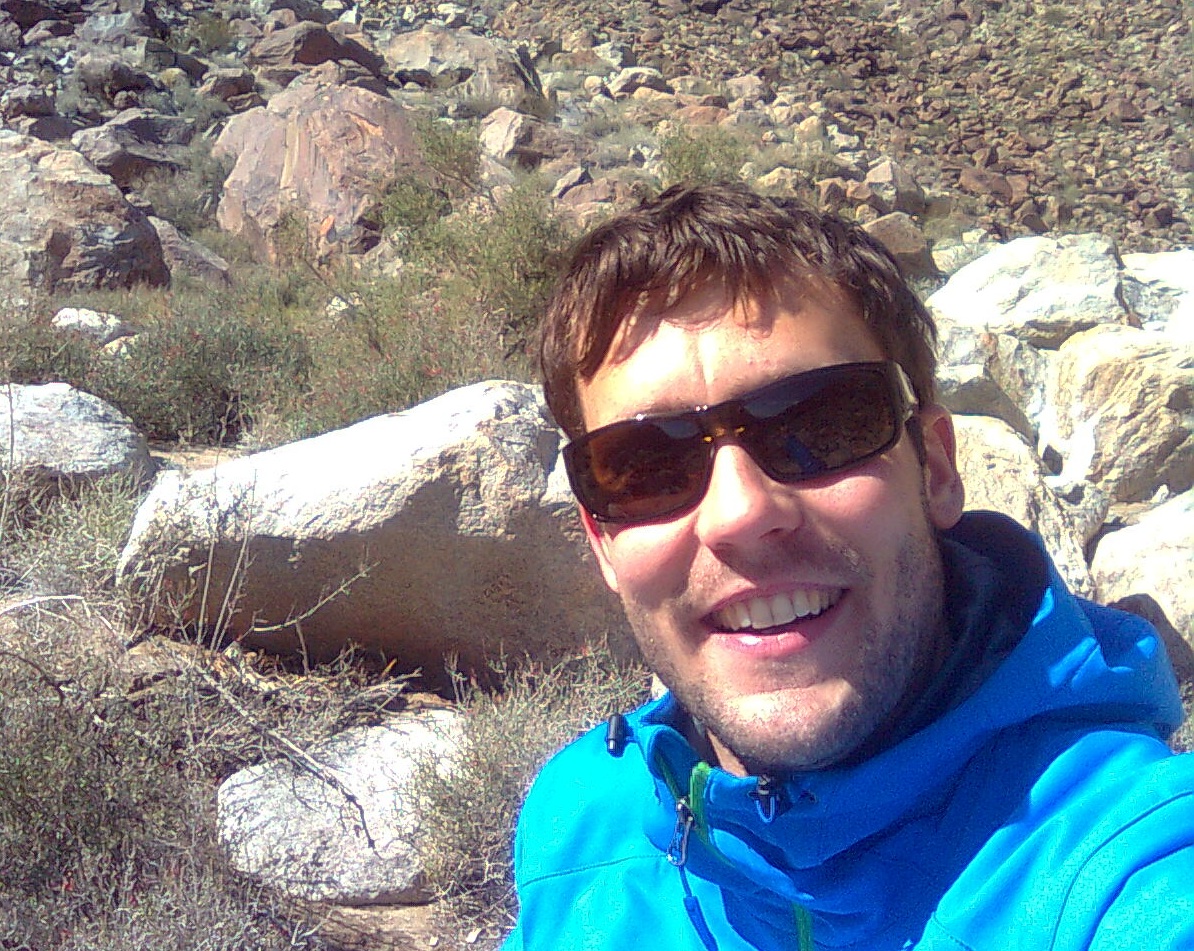 Tobias Lochbuehler
Tobias Lochbuehler
Applied and Environmental Geophysics Group University of Lausanne
Email: tobias . lochbuehler @ unil . ch
Tobias Lochbühler was a PhD student in the Applied and Environmental Geophysics group of Professor Niklas Linde at the University of Lausanne, Switzerland. He received his BS in Earth science and his MS in geophysics in 2008 and 2011 from the Swiss Federal Institute of Technology (ETH Zurich). His MS project was focused on improved forward and inverse modeling of electromagnetic data in applied geophysics and was published in Geophysics (Kalscheuer et.al, 2012).
In his PhD, Tobias worked on improved parameter estimation in hydrogeophysics by means of coupling different data sets and consideration of conceptual geological a priori information. Recent contributions include papers on joint inversion of hydrological and geophysical data (Lochbühler et al., 2013) and conditioning of multiple-point geostatistics simulations to tomographic images (under review).
Tobias spent three months in our research group to work on probabilistic geophysical inversion, as alternative to “subjective” deterministic penalized least-squares inversion. Statistical information of expected model morphology is extracted from training images (i.e., conceptual geological models) and defined as prior distribution in stochastic geophysical inversion using the measured data geophysical data (travel times) as likelihood function. This Bayesian approach is more objective, removes inversion artifacts and provides posterior subsurface models that are in close agreement with the observed two/three-dimensional subsurface properties (porosity, soil moisture content, etc.). This methodology was introduced in a recent paper submitted to Geophysical Journal International and subsequently applied to CO2 sequestration. This paper uses electrical resistance tomography data, and evaluates the effects of different model parameterizations for geophysical monitoring of geologic CO2 sequestration.
